A commentator [1] has recently concluded that excess mortality due to austerity in Puerto Rico exceeds that attributable to Hurricane Maria and its aftermath. I take issue with that conclusion.
Chinn-Ito Financial Openness Index Updated to 2016
Manufacturing Employment and Output
Today’s employment situation release depicted a picture of continuing recovery in the labor market. One interesting aspect is what is happening to the tradables sector, which I proxy with the manufacturing sector. There, the advance data indicate a slight decline.
“The United States is going to become the warehouse for global soybean supplies”
That’s a quote from Paul Burke, regional director for North Asia at the U.S. Soybean Export Council, in Time. He continues “This is the realization that we’re coming to within the trade within the last couple of weeks.”
The Trade Deficit Rises
From Goldman Sachs (Hatzius, et al.) today, interpreting today’s July trade release:
The trade deficit rose to $50.1bn in July, from a revised $45.7bn in June. Total exports fell 1.0%, as the total drop in exports ($2.1bn) was comprised primarily of declines in civilian aircraft ($1.6bn) and soybeans ($0.7bn). The decline in soybeans exports likely reflects payback following a sharp increase in June ahead of Chinese retaliatory tariffs. Total imports (+0.9%) rose, reflecting increases in both petroleum imports (+3.7%) as well as nonpetroleum imports (+0.6%).
Trade Policy Uncertainty
My guess [1] is it’s gonna rise again (not that it’s particularly low right now)
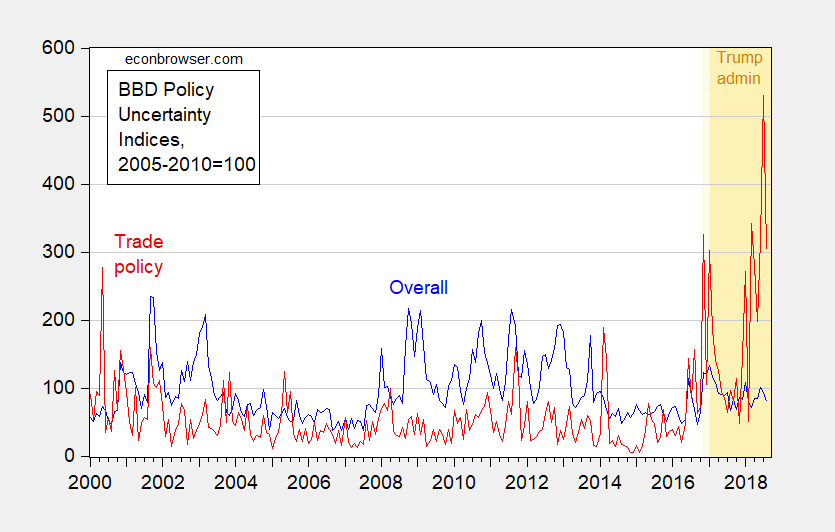
Figure 1: Categorical Economic Policy Uncertainty — (blue), Trade Policy Uncertainty (red), 2005-2010=100. Source: PolicyUncertainty, accessed 9/3/2018.
The Investment Boom…or Not
Fixed nonresidential investment is rising at a rapid clip. However, there are some nuances to the headline story.
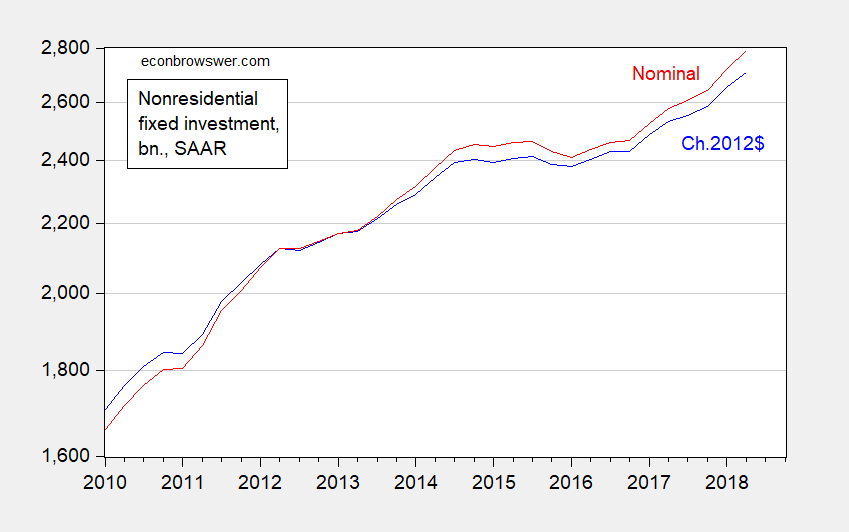
Figure 1: Nonresidential fixed investment, in billions of Ch.2012$ (blue), and in billions of dollars (red), both SAAR, both on log-scale. Source: BEA, 2018Q2 2nd release.
Some sizable portion of recent investment is associated with the mining/drilling/fracking phenomenon.
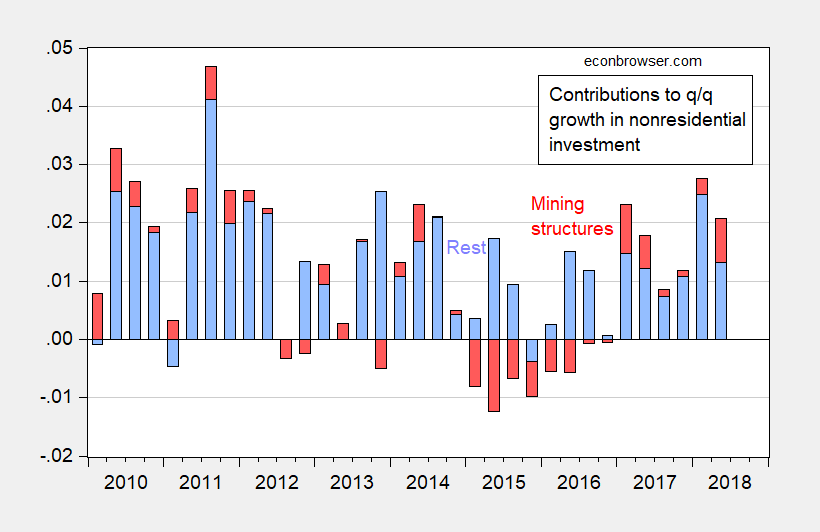
Figure 2: Contributions to overall nonresidential fixed investment growth of structures investment in mining (red), and all else (blue). Source: BEA, 2018Q2 2nd release, and author’s calculations.
For the moment, investment looks like it should be sustained. However, should oil prices decline, or the spigot of cash diminish (see McLean/NYT today), then the support coming from this sector might disappear. (This article discusses light tight oil (LTO) sector cash flow, financing, and prospective capital investment.)
In addition, investment in equipment, while rising overall, is declining in the industrial sector.
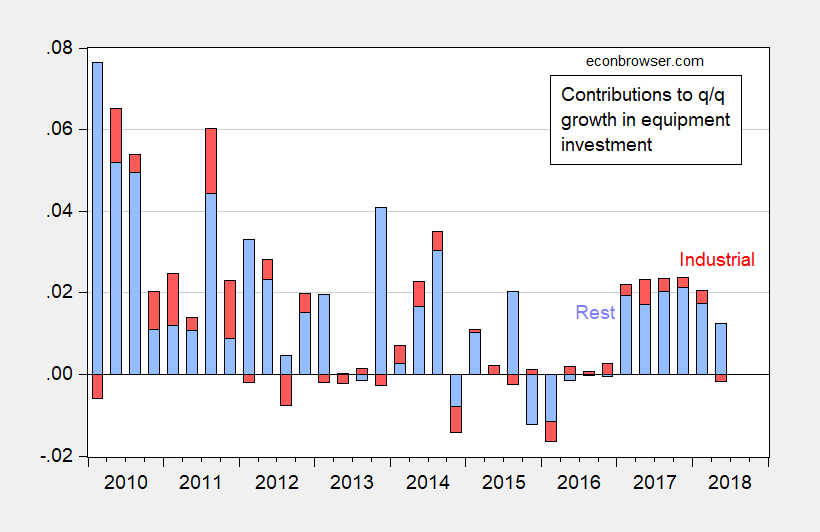
Figure 3: Contributions to overall equipment investment growth of industrial equipment investment (red), and all else (blue). Source: BEA, 2018Q2 2nd release, and author’s calculations.
Right now, increased investment demand coming from the accelerator is more than offsetting the drag coming from higher policy uncertainty. As the effects of the tax cuts wear off, we should expect the balance to shift.
Short Term Growth Prospects
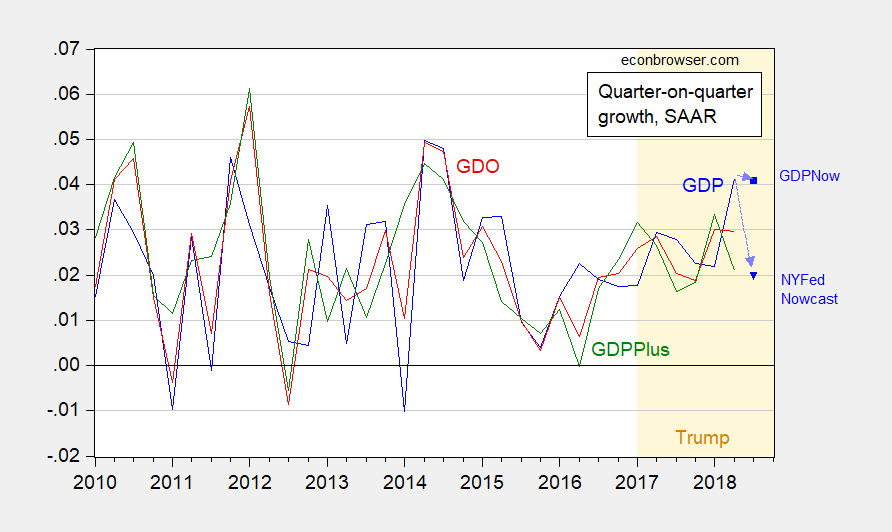
Figure 1: GDP (blue), GDO (red), and GDPPlus (green), q/q SAAR growth calculated as log diferences, and GDPNow (blue square) and NY Fed Nowcast (blue open triangle). Source: BEA 2018Q2 2nd release, Philadelphia Fed, Atlanta Fed (8/30),
NY Fed (8/31), and author’s calculations.
Thinking about that Surge in Growth
Two points from the 2018Q2 2nd release: GDO is smoother, and a breakout has not yet appeared.
Trumpification of USDA?
The demolishment of technocratic and research groups continues.
Continue reading